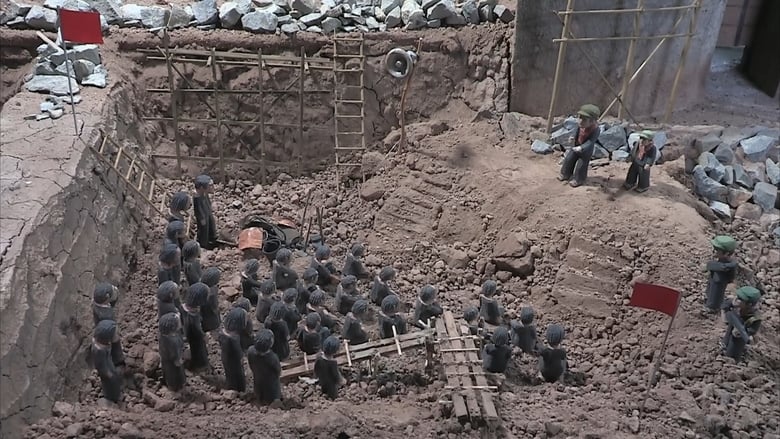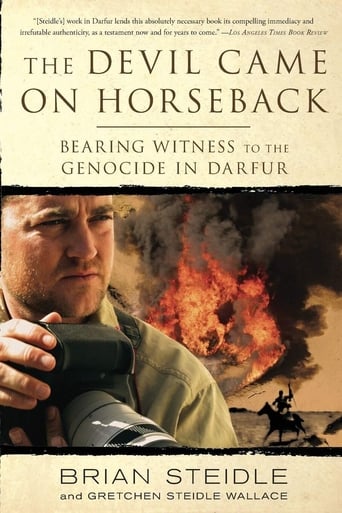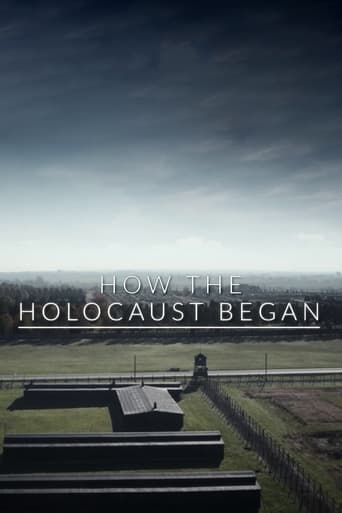The Missing Picture (2013)
Rithy Panh uses clay figures, archival footage, and his narration to recreate the atrocities Cambodia's Khmer Rouge committed between 1975 and 1979.
Watch Trailer
Cast


Similar titles
Reviews
Very well executed
Very disappointing...
In truth, there is barely enough story here to make a film.
I didn’t really have many expectations going into the movie (good or bad), but I actually really enjoyed it. I really liked the characters and the banter between them.
I love me some slow, moody, atmospheric and introspective films. Yet I found this to be really, really slow at times. The premise of using clay figurines is a great one, and at times it really added to the film's power by not forcing images and allowing us to use our imagination, but it was used a lot and together with sort of ho-hum archival footage, and the dreamy narration, I'd be lying if I said I didn't find the film to be really slow to watch at times. It just got a bit repetitive and the subject matter wasn't presented in a more fascinating way. Still, I found some of it effective and the film is pretty original in that way so I have to give it props where they are due.
"It's not a picture of loved ones i seek, i want to touch them, their voices are missing, so i wont tell. I want to leave it all, leave my language, my country in vain and my childhood returns. Now it's the boy who seeks me out, i see him, he wants to speak to me but words are hard to find." -Randal DoucI think i first heard of The Missing Picture more than a year ago when it premiered at Cannes and got out of there with the Un Certain Regard Award. The early buzz was good but the film did not stay with me and it was quickly forgotten until it's name came as a surprise in Academy Award Nominations that gave the film a nomination at the Best Foreign Picture. Then i check out the film again and realized that it had gotten great reviews overall and the film entered my watchlist but only seven months after that event was able actually able to see it. I was now still curious but not exactly excited to see it.The Missing Picture is Directed by Rithy Panh, "For many years, I have been looking for the missing picture: a photograph taken between 1975 and 1979 by the Khmer Rouge when they ruled over Cambodia. On its own, of course, an image cannot prove mass murder, but it gives us cause for thought, prompts us to meditate, to record History. I searched for it vainly in the archives, in old papers, in the country villages of Cambodia. Today I know: this image must be missing. I was not really looking for it; would it not be obscene and insignificant? So I created it. What I give you today is neither the picture nor the search for a unique image, but the picture of a quest: the quest that cinema allows."As said i was interested but not exactly excited to finally see this, i felt like it was more of an obligation since it had received great praise and even an Academy Award Nomination. Well i got to say that i'm a foll because i was completely overwhelmed by this film, it's a shame that it have only seen it now and a shame that most people have not yet seen and are likely to never see this wonderful little movie.It's funny because i had heard from the film for so long but i went in knowing absolutely nothing, i had no idea what it was about, i had heard that it was an unusual kind of documentary, but the film was not nominated for that category so i was a bit confused. The film is indeed a documentary that follows the life experience of a man who lived under the Khmer Rouge regime in Cambodia from 1975 to 1979. So after gaining independence and fighting the Vietnam War and a Civil War the Cambodian people went through a lot more they went through the Communist Regime, where the slogan are everyone is equal and those who complaint are enemies, where ignorance and hunger are kings. The Cambodian holocaust went through four years of enslavement and working fields that killed over 2.500.000. people. You probably didn't know that right? Me neither.The film certainly as a moving, touchy subject but only having an important subject doesn't make a good documentary, it's direction sure is important and here the direction is certainly unorthodox and the results are nothing short of outstanding. Documentary does feature live action images of the working fields but most of the film's narrative and storytelling is done through clay figures. Yes clay figures are used to dramatize the horrifying images that the director as a child saw and experienced. The results, are nothing of amazing, this could have gone real goofy, or maybe it would have been impossible to us audience to make a connection with the story if it's being told by clay figures but non of that is true. Weirdly or not we are able to connect and relate to the clay figures and the film is able to be emotionally wrecking and have an enormous deal of power even if through those little pieces.Never in a million years would i have thought that those little figures would have moved me in the way they did, they are quite disturbing too, the faces of the figures, very expressive at times it was like the fear, the hunger it became palpable, it's amazing. This is also due to the documentaries fantastic direction that reminded me of Hiroshima Mon Amour, it's poetic, breathtaking.The Missing Picture is an amazingly underseen picture, last years best documentary(yes better than The Act of Killing) and by the way why was this not nominated for that category. Well continuing...if you have the chance see it and you won't be disappointed, it's emotionally shattering, it's unusual, innovative, poignant and overall an extremely well made documentary that is among last years best.Rating: A-
I watched The Missing Picture (2013, dir. Rithy Panh) last night and thought how clay figures can't compensate for missing pictures. I thought I was going to enjoy the film when it opened with poetic narration and a mesmerizing piece of archival film depicting a Cambodian dancer and the years prior to the Pol Pot takeover. However, as the film started relying more on static clay figures and less on archival footage I began to lose interest. Panh's story is remarkable and beautifully told, but the clay figures, although quite expressive in their design and arrangement, reminded more of an award winning high school diorama than the visuals for an award winning documentary film.
This is a documentary about one person's experiences under the Khmer Rouge in Cambodia between 1975-1979 when the country was called Kampuchea. The trauma of the horrors visited upon survivors of this period do not make for an easy telling. The film maker opted for an unusual and novel approach; recreating the story and events using miniature figurines that he hand carved. Lots and lots of figurines with hand made sets to accompany them. The images reminded me at times of the war/hell scenes for which the Chapman brothers are famous. It is a most effective medium for drawing a person into an arena of horror.Anyone with knowledge of trauma survivors knows that retelling a traumatic story is not always a good course for the survivor. Using the figurines to depict the worst moments witnessed by the film maker facilitates the story in a way that is more separate. The separateness allows the survivor to engage without traumatising themselves further. Bravo to the film maker for finding the means by which to bear witness. This is one of those films where the form is the most significant feature of the film.Accompanying the stunning visuals, which includes archive footage and photographs also, is a narrator whose speech is spare and poetic. I stopped my DVD and wrote out many of the lines; so simply and beautifully did they express a thought or feeling. One of the most important underpins some of the motivation for making the film: "To hang on you must hide within yourself a strength, a memory, an idea that no one can take from you. For if a picture can be stolen, a thought cannot." Later he says: "There are many things that man should not see or know. Should he see them, he'd be better off dying. But should any of us see or know them then he must live to tell of them." In a situation where everything is taken from you and you are left with but two things - an outfit of black clothing and a spoon for eating meagre amounts of food - to be able to retain something of one's self, which includes people known, places visited, experiences, memories of a physical home and possessions, becomes essential to survival with mind intact. Furthermore if one survives an atrocity then the survivors have a duty, unsought but one nonetheless, to bear witness so that the atrocity might be known, acknowledged and learnt from. The film maker did both. At age 13 the film maker and his family became prisoners of the Khmer Rouge when they invaded the capital city. During their years of hypocritical rule, as seems to be the case for every dictatorship, the film maker lost his dad, who chose to die, his mother, his siblings and his large extended family. He was one of those chosen to bury the dead in mass graves and knows not how he endured such a life but his retelling is piquant to say the least. The Khmer Rouge regime reminded me of the Nazi concentration camps. It reminds me that the Holocaust was not a defining moment in human history for such evil has happened before and since.The title, the missing picture, is the main theme. It is a trope for the film maker's means of bearing witness. The archive footage is mostly propaganda. It does not show the effects of the society being promoted. The film maker had no photographs of his father withered from his fatal hunger strike. He has no photos of the minuscule food portions given to the adults and children whose lives consisted of endless hard labour. He has no photographs for the mud he drank in lieu of water. So he is recreating these photographs with his figurines and puppet sets. He is showing us the photographs in the only way he can; it matters that we see what he saw and heard and felt.One would not expect such a film to be beautiful but this is; from the images, the form, the narration, the film maker's weary and collected wisdom. I was startled by the descriptions, photographs and songs from Cambodia pre-Khmer Rouge, or perhaps I should say from Phnom Penh - its capital, because it was so westernised. It was shocking to see what the leaders of the Khmer Rouge did to the city and its people. The film maker concludes: "This missing picture I now hand over to you so that it never ceases to seek us out." Humans seem destined to visit atrocities upon one another. If we cannot avoid such a fate then at least we can attend to the witnesses of this aspect of human life.










